Q
When was Toyota Raize launched?
Toyota Raize first hit the scene in Japan back in November 2019 as a compact SUV, before making its way to Malaysia in 2020. There, it's produced locally by Perodua under an OEM partnership and rebadged as the Perodua Ativa, so we can consider 2020 its official launch year in Malaysia. Powering this little SUV is a peppy 1.0-liter turbocharged three-cylinder engine paired with a D-CVT gearbox, focusing on fuel efficiency and nimble city driving – perfect for Malaysia's varied road conditions.
Malaysian buyers have taken a shine to the Raize thanks to its youthful exterior styling and generous safety kit, including Toyota Safety Sense. Its compact dimensions make squeezing into city parking spots a breeze, while the decent ground clearance means it can handle the odd light off-road detour too.
It's worth noting that the Raize shares its underpinnings with the Daihatsu Rocky, both riding on the DNGA modular platform co-developed by Toyota and Daihatsu. This tech also finds its way into several Perodua models, showcasing Toyota Group's strategy of sharing resources effectively across Southeast Asia. For Malaysian owners, the Raize benefits from seamless integration with Perodua's local warranty coverage and after-sales network, ensuring a hassle-free ownership experience when it comes to maintenance.
Special Disclaimer: This content is published by users and does not represent the views or position of PCauto.
Related Q&A
Q
Are all Toyota Raize turbocharged?
Not all Toyota Raize models are turbocharged. The Toyota Raize comes in different powertrain versions. Among them, the 1.0L Turbo CVT model is equipped with a turbocharged engine. The intake type is Turbo, and the engine has a maximum horsepower of 98PS. However, there are also 1.2L models, including the 1.2L E CVT, 1.2L E MT, and 1.2L G CVT. These models have a displacement of 1198mL and are powered by naturally aspirated engines with a maximum horsepower of 88PS.
A turbocharged engine can provide greater power output with the same displacement, enhancing the vehicle's acceleration performance. On the other hand, a naturally aspirated engine features a simple structure, good stability, and low cost. It has a linear power output and can also meet the needs in daily driving.
Q
Is Toyota Raize keyless?
Yes, some models of the Toyota Raize in the Malaysian market are equipped with the Keyless Entry system. It specifically depends on the selected configuration level. Higher - spec versions usually come with this convenient feature, allowing car owners to unlock the doors or start the engine via the buttons on the door handles without taking out the keys. This compact SUV is also fitted with the Push Start function. When used in conjunction with the Keyless system, it can significantly enhance the daily convenience of using the vehicle.
For Malaysian consumers, such configurations are particularly useful in hot weather or when their hands are full. At the same time, the Raize maintains the Toyota models' consistent durability and low - fuel - consumption characteristics. Its 1.0L turbocharged engine is suitable for local road conditions. It should be noted that there may be configuration differences among different model years. It is recommended to confirm the latest specifications with authorized dealers before purchasing a car.
Similar technologies are also offered by competing models in the same class, such as the Honda HR - V and the Daihatsu Rocky. However, Toyota has an edge in terms of local after - sales network coverage and vehicle resale value. If your budget allows, choosing the version with the keyless system can provide a more modern driving experience, especially for urban users who often need to commute for short distances.
Q
Is the Toyota Raize a luxury car?
The Toyota Raize isn't a luxury car. It's positioned as a compact SUV, targeting the economical, practical, and youth - oriented market. It's suitable for Malaysian consumers with limited budgets but a preference for fashionable designs. The Raize is equipped with a 1.0 - liter turbocharged or a 1.2 - liter naturally aspirated engine, emphasizing fuel economy and urban driving flexibility. In terms of configuration, it offers basic technologies like a touch screen and a rear - view camera, but lacks high - end features commonly found in luxury cars, such as leather seats, premium audio systems, or intelligent driving assistance.
In the Malaysian market, its price range is similar to that of the Perodua Ativa, making it an affordable model. Luxury cars usually refer to high - end products from brands like Lexus and Mercedes, which come with more powerful engines, exquisite interiors, and brand premiums. If you want to know about its competitors in the same class, you can refer to the Honda HR - V or the Mazda CX - 3. They offer a more near - luxury experience in some configurations, but their prices are relatively higher. Consumers who choose the Raize value cost - effectiveness and Toyota's reputation for durability more than luxury features.
Q
Does Toyota Raize Equip with Lane Assist?
Yes, the Toyota Raize is equipped with the Lane Assist system on some high-end models. This feature is usually included in the Toyota Safety Sense (TSS) active safety package. It monitors the lane lines through a camera and provides steering wheel correction or warnings when the vehicle drifts out of the lane, helping the driver keep the vehicle centered in the lane. It should be noted that the specific configuration may vary depending on the year and model version. It is recommended that Malaysian consumers confirm with local dealers before purchasing or refer to the official specification sheet.
Lane Assist is part of the ADAS (Advanced Driver - Assistance Systems). This kind of technology has gradually become popular in the Malaysian market in recent years. In addition to Toyota, other brands such as Honda and Mazda also offer similar functions, but the implementation methods may vary slightly. For example, some systems only provide warnings, while others actively intervene in steering. For owners who often drive long-distance, this kind of feature can effectively reduce fatigue, but it should be noted that it is not fully autonomous driving, and the driver still needs to maintain control of the vehicle.
Q
What is the safety rating of the Toyota Raize?
The safety rating of the Toyota Raize performs well in the Southeast Asian market. Its base - model vehicle received a 4 - star rating (out of 5) in the ASEAN NCAP test, mainly thanks to the standard basic safety features such as dual airbags, ABS anti - lock braking system, and vehicle stability control system. If the high - end version adds side airbags and other configurations, it is expected to be upgraded to a 5 - star rating.
For Malaysian consumers, the Raize's active safety features, such as the Pre - Collision System (PCS) and Lane Departure Warning (LDW), are at the mainstream level in the B - SUV segment. However, it should be noted that the test results are based on the ASEAN NCAP standard, which differs from the test items of the European Euro NCAP or the Japanese JNCAP.
Malaysian car owners can consider the differences in safety - configuration versions according to their own needs when making a purchase. For example, users who often drive long - distance are recommended to choose models equipped with adaptive cruise control. At the same time, it is advisable to visit authorized dealers to experience the demonstration of the vehicle's safety functions to have a more comprehensive understanding of the vehicle's protection performance.
Q
Is Toyota Raize a Hybrid Model?
Currently, all versions of the Toyota Raize available in the Malaysian market are pure fuel-powered models, and no Hybrid version has been launched. This vehicle is equipped with a 1.0L turbocharged engine or a 1.2L naturally aspirated engine, targeting the economical and practical small SUV market. For Malaysian consumers who are interested in hybrid technology, Toyota also offers other popular hybrid models in the local market, such as the Corolla Cross Hybrid or the Yaris Cross Hybrid. These models adopt Toyota's mature THS II hybrid system, which can significantly improve fuel efficiency and reduce emissions. In recent years, the Malaysian government has been encouraging the popularization of hybrid and electric vehicles through policies like tax exemptions. Therefore, if a hybrid version of the Raize is launched in the future, it may attract more local users who care about environmental protection and fuel consumption. It should be noted that although hybrid technology can save fuel, the purchase cost is usually higher than that of the fuel-powered version. It is recommended that consumers make a choice based on their actual budget and vehicle-using needs. Meanwhile, they can also pay attention to the actual test reports of hybrid technology by Malaysian automotive media to get more comprehensive reference information.
Q
What is the difference between Toyota Ativa and Raize?
The Toyota Ativa and Raize are essentially the same model with different names in different markets. The Ativa is the exclusive name for Toyota in the Malaysian market, while the Raize is the common name in the international market. Both are built on the DNGA platform and share core technologies and designs. In the Malaysian market, the Ativa has undergone some adaptation adjustments to meet local needs. For example, the suspension is tuned to better suit tropical road conditions, and it may offer configuration options that match the preferences of Malaysian consumers, such as ventilated seats or extra storage space.
In terms of power, both are equipped with a 1.0 - liter turbocharged three - cylinder engine paired with a CVT transmission. However, the ECU tuning of the Ativa may take into account the fuel quality and climate conditions in Malaysia. In terms of appearance, the Ativa continues the compact SUV design of the Raize, but there may be slight differences in the front grille or wheel styles to enhance local recognition.
It's worth noting that this "twin - model" strategy is quite common in the automotive industry, aiming to improve market acceptance through localization optimization. For example, the Proton X50 and Geely Binyue also have a similar relationship. For Malaysian consumers, choosing the Ativa means enjoying comprehensive after - sales support from Toyota's national dealer network. On the other hand, parallel - imported Raizes may face differences in warranty and parts supply. It is recommended to carefully compare the configuration lists and after - sales service terms before purchasing a car.
Q
Will Toyota Raize be Introduced in Malaysia?
Currently, it hasn't been officially confirmed whether Toyota Raize will be introduced into the Malaysian market. However, considering its popularity in other Southeast Asian countries and Toyota's product layout in Malaysia, there's a possibility of its introduction in the future. As a compact SUV targeting the young market, Raize has performed well in markets like Indonesia and Thailand, thanks to its stylish appearance, fuel efficiency, and Toyota's reputation for reliability. If it enters the Malaysian market, it may compete with models such as Honda HR-V and Proton X50. The demand for compact SUVs among Malaysian consumers has been continuously increasing. Coupled with the advantage of local assembly by Toyota UMW, Raize will be more price - competitive if it's locally produced. It should be noted that the Malaysian market has a greater preference for hybrid vehicles. If Raize can offer a hybrid version, it will better align with the local trend. It is recommended to follow the official website of Toyota Malaysia or local auto show information, as new vehicle introductions are usually officially announced through these channels. For consumers with a limited budget who still want Toyota's quality, they can first look into the currently available Toyota Rush or second - hand C - HR models as transitional options.
Q
Is Toyota Raize automatic?
Yes, the Toyota Raize available in the Malaysian market comes with an automatic transmission. Specifically, it is equipped with a D-CVT continuously variable transmission. This type of transmission combines the smoothness of a traditional CVT with the driving feel of simulated gear shifts. It is suitable for city commuting and boasts excellent fuel economy. As a compact SUV under the Toyota brand, the Raize is targeted at the younger demographic. The combination of its 1.0-liter turbocharged engine and automatic transmission strikes a good balance between power and fuel consumption, making it a great fit for the stop-and-go traffic conditions in Malaysia.
It's worth noting that automatic transmissions are quite popular in the Malaysian market because they are easy to operate and well - suited for congested roads. Moreover, the Raize's D - CVT also offers a sport mode, which can enhance the acceleration response. When considering models in the same class, the Honda HR - V and Nissan Kicks are also common choices with automatic transmissions. However, the Toyota Raize has a certain edge in terms of cost - effectiveness, thanks to its more affordable price and warranty policy.
It is recommended that you take a test drive at an authorized dealer before purchasing a car to see if the transmission tuning meets your personal driving habits.
Q
How many litres does the Toyota Raize's fuel tank hold?
The fuel tank capacity of the Toyota Raize is 36 liters. This small SUV has gained popularity in the Malaysian market for its economic practicality and stylish design. Its fuel tank design takes into account the needs of daily commuting and short-distance trips. Paired with a 1.0-liter turbocharged or a 1.2-liter naturally aspirated engine, it can offer a combined fuel consumption of about 15 to 18 kilometers per liter, and the full-tank range can reach around 500 to 600 kilometers.
For Malaysian users, it's necessary to pay attention to the choice of fuel. It is recommended to use RON95 gasoline to balance economy and engine performance. At the same time, regularly checking the tightness of the fuel tank cap can prevent evaporation losses. If you're going on a long-distance drive, you can flexibly plan your stops at gas stations based on its minimum turning radius of 7.4 meters.
In the same class, models like the Honda HR-V or the Proton X50 have a fuel tank capacity of about 40 to 45 liters. However, thanks to its lighter vehicle weight and efficient power tuning, the Raize still remains competitive in terms of fuel economy. Owners can further optimize the actual fuel consumption through reasonable driving habits.
Popular Cars
Model Year
Car Compare
Car Photo
Latest Q&A
Q
How reliable is a 2019 Porsche Macan?
The 2019 Porsche Macan delivers solid reliability, thanks to its proven 2.0T or 3.0T engines that offer consistent power delivery. The PDK dual-clutch transmission is another strong point—it’s both durable and buttery-smooth.
Porsche’s sporty DNA shines through in the Macan’s chassis tuning and all-wheel-drive system, yet it doesn’t compromise everyday comfort. Owner feedback suggests that sticking to the factory maintenance schedule keeps most examples running trouble-free, though be prepared for higher upkeep costs (as with any luxury vehicle).
Its strong resale value speaks volumes about its reputation for dependability. If you’re after driving thrills without sacrificing SUV practicality, the 2019 Macan is a compelling pick. Just be sure to get a pre-purchase inspection and verify full service history—it’ll pay off in the long run.
Q
How much is a 2019 Porsche worth?
The value of a 2019 Porsche depends on the model, mileage, condition, and specs. Take the popular Cayenne, for example—used ones typically go for between RM300k to RM500k. A 911 Carrera might range from RM500k to RM800k, while an entry-level 718 Boxster or Cayman could be around RM250k to RM400k. For luxury sedans like the Panamera, expect prices between RM350k to RM600k, but always check the actual condition and option list.
Porsches hold their value well, especially limited editions or high-performance GT models, but maintenance costs and service history play a big role in resale pricing. If you're buying, stick to official certified pre-owned channels or get a professional inspection. Always verify warranty transfers and repair records.
Pro tip: Compare listings on local used-car platforms and check recent sales data—market demand and inventory fluctuations affect pricing. Also, factory options (like sport packages or premium audio) can boost resale value, while accident history or multiple owners might slash the price by 10-20%.
Q
Does the 2019 Macan have a good sound system?
The 2019 Porsche Macan delivers an impressive audio performance, particularly with the optional Bose® Surround Sound System or the top-tier Burmester® High-End Surround Sound System—both offering an immersive listening experience.
The Bose® setup packs 14 speakers with 665 watts of total power, delivering crisp audio and punchy bass perfect for pop and electronic music. Meanwhile, the Burmester® system steps it up with 16 speakers and 1,000 watts, creating a wider soundstage and superior detail reproduction—ideal for classical or high-resolution tracks.
Both systems integrate seamlessly with Porsche’s standard Communication Management (PCM), supporting Apple CarPlay and multiple audio sources. If sound quality is a priority, be sure to specify your audio preference at purchase—the base model only comes with a standard speaker setup.
For the best performance, play lossless files via USB or high-quality Bluetooth codecs, and keep the system firmware updated for optimal operation.
Q
What is the resale value of a 2019 Macan?
The resale value of a 2019 Porsche Macan depends on factors like condition, mileage, specs, and service history. Current used prices hover between RM250k to RM350k, with higher trims commanding premium prices. As Porsche's entry SUV, the Macan holds its value better than most rivals thanks to brand prestige and sporty DNA – especially models optioned with Sport Chrono or full leather interiors fetching stronger money.
Pro tip: Get a pre-sale inspection and organize your maintenance paperwork – this really helps maximize resale. Macans move quickly in our local used market, with 3-5 year-old examples being the sweet spot when depreciation levels off. If you're upgrading, consider Porsche Approved Certified pre-owned – you'll pay a slight premium over private sales, but the extended warranty and factory refurbishment save headaches down the road.
Q
Is a 2019 Porsche Macan a good car?
The 2019 Porsche Macan is a well-rounded luxury SUV that stays true to Porsche's performance DNA while delivering everyday practicality. It comes with your choice of a peppy 2.0T or more powerful 3.0T engine, paired with Porsche's brilliant 7-speed PDK transmission that shifts like butter. The chassis strikes that sweet spot between sporty handling and comfortable cruising - perfect for both city commutes and weekend backroad blasts.
Inside, you'll find Porsche's typical top-notch craftsmanship with a standard 10.9-inch touchscreen featuring Apple CarPlay. Just don't expect limo-like rear legroom. These things hold their value surprisingly well, though maintenance will cost you more than your average SUV - but then again, you get Porsche's excellent service network.
Among its competitors, the Macan stands out for its driver engagement. If you want more grunt, step up to the Macan S or GTS. One pro tip: if you're shopping used, pay special attention to the PDK's condition and inspect the suspension components. Always better to go through Porsche's certified pre-owned program for that extended warranty peace of mind.
View MoreRelated News

Toyota unveils the new Corolla at the Auto Guangzhou in China. What changes will the future Corolla have?
AshleyNov 25, 2025

Why is the facelifted GR Yaris considered the finished product?
AshleyNov 21, 2025

Toyota is developing two new Land Cruiser models, will Land Cruiser become an independent brand in the future?
JamesNov 20, 2025

Toyota Supra (A90) will be discontinued next March, and the next generation model may be led by Toyota.
JohnNov 14, 2025

Which one is better, Honda City or Toyota Vios?
AshleyNov 11, 2025
View More


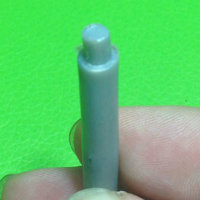

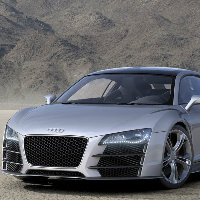



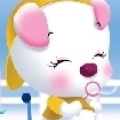
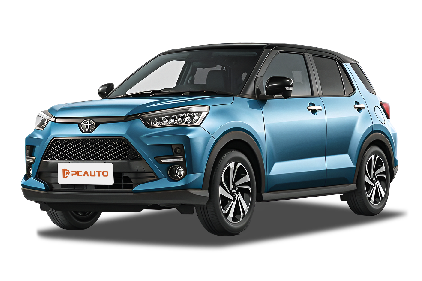

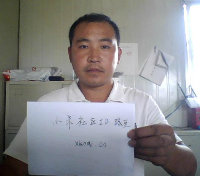



Pros
Cons